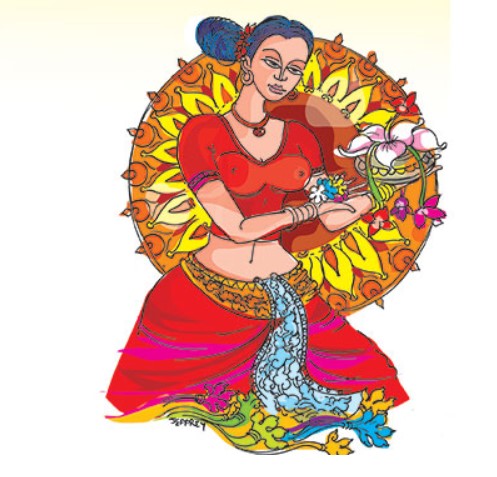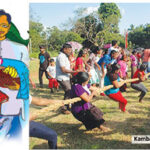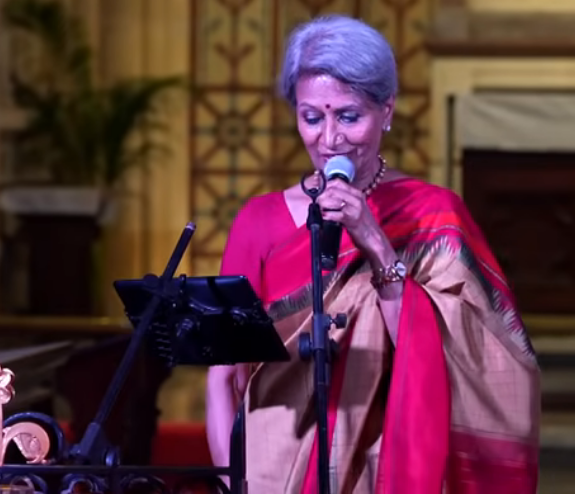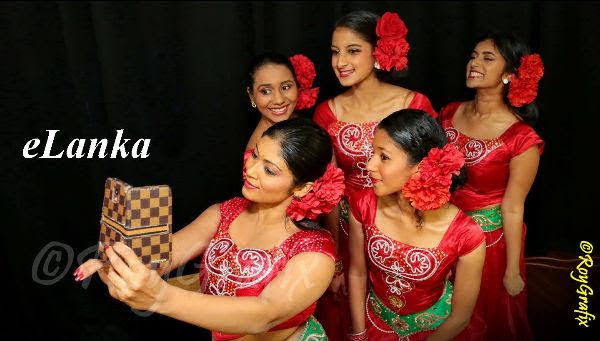Dichotomy of an urban-suburban New Year

Source:Island
Ushered in by the ‘coo-ee’ of the Koel and the swaying of Erabadu bunches, the Sinhala and Tamil New Year will dawn in the wee hours of April 14. With houses to clean, preparation of sweetmeats and last-minute shopping, times are hectic…. and the streets congested.
It is believed that New Year traditions predated the advent of Buddhism in the 3rd century BC. But Buddhism resulted in a re-interpretation of the existing New Year activities in a Buddhist light. Hinduism has co-existed with Buddhism over millennia and no serious contradiction in New Year rituals are observed among Buddhists and Hindus.
The local New Year is a complex mix of Indigenous, Astrological, Hindu, and Buddhist traditions. Hindu literature provides the New Year with its mythological backdrop. The Prince of Peace called Indradeva is said to descend upon the earth to ensure peace and happiness, in a white carriage wearing on his head a white floral crown seven cubits high. He first plunges, into a sea of milk, breaking earth’s gravity.
The timing of the Sinhala New Year coincides with the New Year celebrations of many traditional calendars of South and Southeast Asia. Astrologically, the New Year begins when the sun moves from the House of Pisces (Meena Rashiya) to the House of Aries (Mesha Rashiya) in the celestial sphere.
The New Year marks the end of the harvest season and spring. Consequently, for farming communities, the traditional New Year doubles as a harvest as well. It also coincides with one of two instances when the sun is directly above Sri Lanka. The month of Bak, which coincides with April, according to the Gregorian calendar, represents prosperity. Astrologers decide the modern day rituals based on auspicious times, which coincides with the transit of the Sun between ‘House of Pisces’ and ‘House of Aries’.
Consequently, the ending of the old year, and the beginning of the new year occur several hours apart, during the time of transit. This period is considered Nonegathe, which roughly translates to ‘neutral period’ or a period in which there are no auspicious times. During the Nonegathe, traditionally, people are encouraged to engage themselves in meritorious and religious activities, refraining from material pursuits. This year the Nonegathe begin at 8.09 pm on Tuesday, April 13, and continues till 8.57 am on 14. New Year dawns at the halfway point of the transit, ushered in bythe sound of fire crackers, to the woe of many a dog and cat of the neighbourhood. Cracker related accidents are a common occurrence during new year celebrations. Environmental and safety concerns aside, lighting crackers remain an integral part of the celebrations throughout Sri Lanka.
This year the Sinhala and Tamil New Year dawns on Wednesday, April 14, at 2.33 am. But ‘spring cleaning’ starts days before the dawn of the new year. Before the new year the floor of houses are washed clean, polished, walls are lime-washed or painted, drapes are washed, dried and rehang. The well of the house is drained either manually or using an electric water pump and would not be used until such time the water is drawn for first transaction. Sweetmeats are prepared, often at homes, although commercialization of the new year has encouraged most urbanites to buy such food items. Shopping is a big part of the new year. Crowds throng to clothing retailers by the thousands. Relatives, specially the kids, are bought clothes as presents.
Bathing for the old year takes place before the dawn of the new year. This year this particular auspicious time falls on April 12, to bathe in the essence of wood apple leaves. Abiding by the relevant auspicious times the hearth and an oil lamp are lit and pot of milk is set to boil upon the hearth. Milk rice, the first meal of the year, is prepared separate. Entering into the first business transaction and partaking of the first meal are also observed according to the given auspicious times. This year, the auspicious time for preparing of meals, milk rice and sweets using mung beans, falls on Wednesday, April 14 at 6.17 am, and is to be carried out dressed in light green, while facing east. Commencement of work, transactions and consumption of the first meal falls on Wednesday, April 14 at 7.41 am, to be observed while wearing light green and facing east.
The first transaction was traditionally done with the well. The woman of the house would draw water from the well and in exchange drop a few pieces of charcoal, flowers, coins, salt and dried chillies into the well, in certain regions a handful of paddy or rice is also thrown in for good measure. But this ritual is also dying out as few urban homes have wells within their premises. This is not a mere ritual and was traditionally carried out with the purification properties of charcoal in mind. The first water is preferably collected into an airtight container, and kept till the dawn of the next new year. It is believed that if the water in the container does not go down it would be a prosperous year. The rituals vary slightly based on the region. However, the essence of the celebrations remains the same.
Anointing of oil is another major ritual of the New Year celebrations. It falls on Saturday, April 17 at 7.16 am, and is done wearing blue, facing south, with nuga leaves placed on the head and Karada leaves at the feet. Oil is to be applied mixed with extracts of Nuga leaves. The auspicious time for setting out for professional occupations falls on Monday, April 19 at 6.39 am, while dressed in white, by consuming a meal of milk rice mixed with ghee, while facing South.
Traditionally, women played Raban during this time, but such practices are slowly being weaned out by urbanization and commercialisation of the New Year. Neighbours are visited with platters of sweetmeats, bananas, Kevum (oil cake) and Kokis (a crispy sweetmeat) usually delivered by children. The dichotomy of the urban and village life is obvious here too, where in the suburbs and the village outdoor celebrations are preferred and the city opts for more private parties.




















